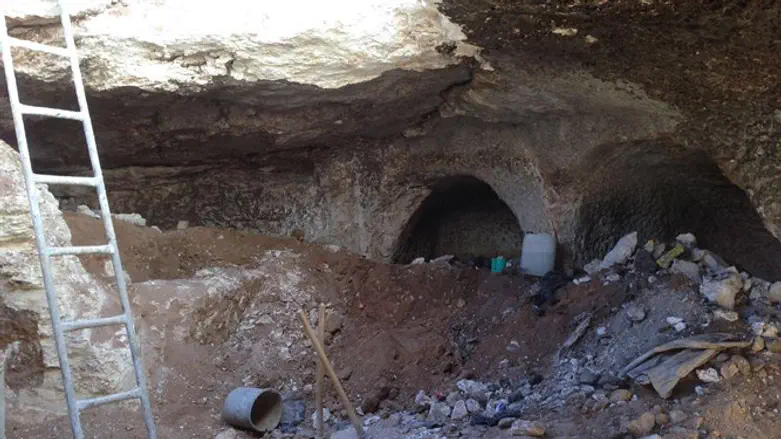
Members of the Archaeology Unit of the Civil Administration arrested a large group of antiquities thieves who broke into a burial cave in Khirbet Ma'on, which lies southeast of Hevron. Khirbet added to the name of a site means "the ruins of."
Ma'on was one of the main settlements in the southern Hevron hills of Judea and is mentioned in the Book of Joshua on the list of cities of Judea, dating back to the MIddle Bronze Age and the First Temple Period.
The Cave of Khirbet Ma'on is dated to the Second Temple period and is part of a large cemetery that belonged to the community that once existed in the ancient village.
Numerous remains and artifacts from the Second Temple period were found at the site, attesting to the large settlement that existed there during that period as well.
Archaeological excavations at the site in the 1980s revealed a synagogue from the Byzantine period (a period beginning int he 4th century C.E.) that served the Jewish community there.
At least ten members of the Arab cell were caught with the assistance of the Surveillance Unit of the Civil Administration and the security forces. An investigation was opened against them.
"The Archeology Unit works using all means to combat the widespread and destructive phenomenon of antiquities theft in Judea and Samaria," says Hanania Hezmi, an officer in the archeology staff at the Civil Administration.
"In Judea and Samaria, there are about 3,000 archaeological sites that illustrate the history of different cultures in all its aspects, but the eradication of the phenomena of theft and destruction requires a great deal of manpower and advanced means ... We will continue to fight to preserve all of our history and bring the perpetrators to justice," Hezmi promised.